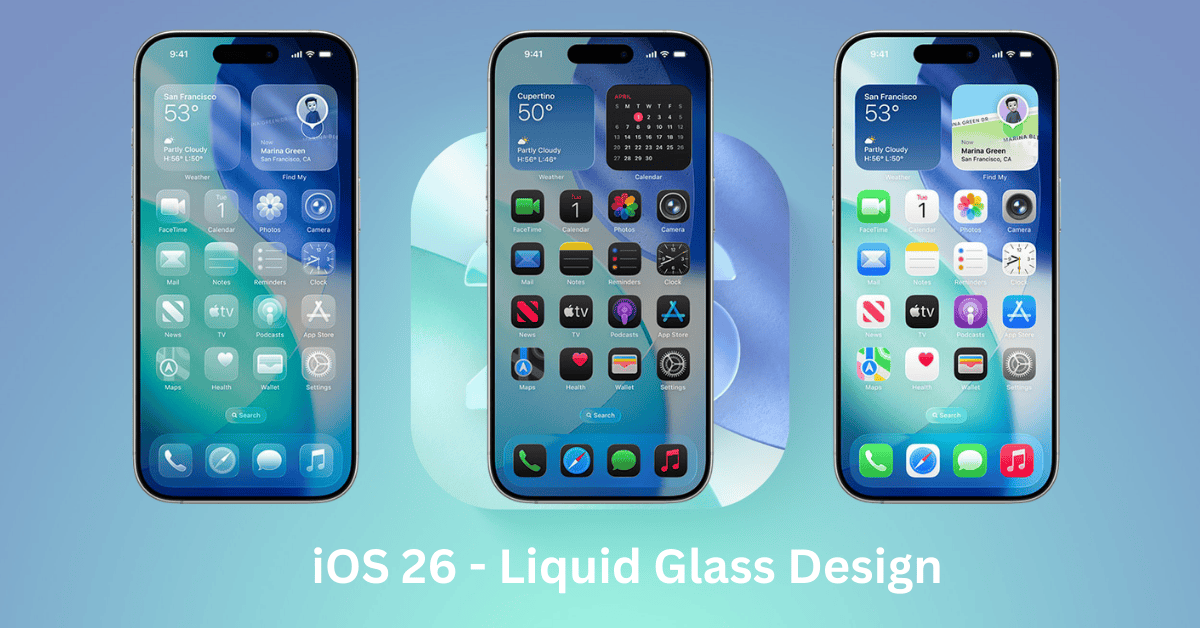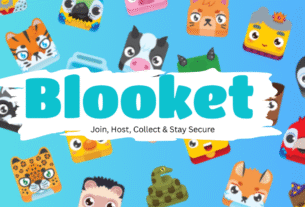iOS 26 Liquid Glass is Apple’s biggest visual refresh in years — a new system material that makes app chrome, widgets, and icons look translucent, refractive, and subtly alive. It’s not just a cosmetic tweak: Liquid Glass is baked into system UI and app surfaces so the whole phone feels more layered, dynamic, and — depending on your taste — modern. Apple positions it as a cross-platform language that brings iPhone, iPad, and Mac closer together visually.
The main value for everyday users is clarity and context: menus and controls adapt to wallpaper, lighting, and interaction so the UI feels like it’s part of the scene rather than sitting on top of it. You’ll also see Liquid Glass paired with Apple Intelligence features that make widgets and shortcuts smarter and with Live Translation tools for real-time conversations. This article shows what changes to expect, how to enable or tone down Liquid Glass, and practical tips designers and users should know.
If you worry about performance or compatibility, relax — devices from the iPhone 11 onward are supported and Apple limited the newest AI tools to the most recent chips. I’ll include exact Settings paths, accessibility quick fixes (for legibility or motion sensitivity), and a short troubleshooting checklist.
iOS 26 Key Highlights — what Liquid Glass brings
iOS 26 is a broad update. Liquid Glass is the headline visual change, but it sits alongside smarter system AI, real-time translation, and new lock-screen/widget behaviors.
- Liquid Glass visuals: translucent, refractive surfaces across toolbars, controls, icons, and widgets.
- Apple Intelligence tie-ins: system suggestions, smarter Reminders, visual queries, and local model support.
- Live Translation: on-device translation that pairs with AirPods for in-person and FaceTime conversations.
- Lock Screen refresh: new spatial feel and widget interactions that respond to Liquid Glass surfaces.
- Privacy-first: many intelligence features run on the device; Apple emphasizes local processing where possible.
What is Liquid Glass in iOS 26?
Liquid Glass is a design material — like frosted glass, but smarter. It blurs and refracts what’s behind it, adapts tint and brightness, and animates shape and shine to cue focus.
- Translucency + refraction: surfaces not only blur, they subtly bend and reflect wallpaper or underlying content.
- Adaptive tinting: controls and icons tint to match lighting, wallpaper, and system theme.
- Motion & depth cues: animations give elements a gentle sense of depth and response.
- Designer guidance: Apple’s WWDC materials explain where to use Liquid Glass vs. when to favor solid backgrounds for legibility.
How Liquid Glass changes the user experience
Liquid Glass aims to make the phone feel more contextual, but it also changes everyday touchpoints — home screen, notifications, Control Center, and widgets.
- Home screen icons: you can pick “clear” icon styles so wallpaper shows through app icons. This is a big visual change.
- Toolbars & controls: buttons and pickers carry subtle glass edges and glints that highlight interaction.
- Notifications & widgets: translucency lets content peek through, so widgets feel less like boxes and more like layers.
- Readability trade-offs: some users report icons becoming harder to find against certain wallpapers — Apple provides accessibility toggles to address this.
Apple Intelligence & Liquid Glass — how they work together
Liquid Glass is visual. Apple Intelligence is functional. Together, they deliver context-aware UI that adapts to your needs and content.
- Proactive short-cuts: widgets and toolbars surface suggestions based on what you’re doing. Apple Intelligence powers these cues.
- Visual Intelligence: ask about things on your screen (photos, screenshots) and get contextual cards that fit into Liquid Glass panels.
- On-device models: Apple allows local models via developer frameworks so apps can tap into Apple Intelligence safely. Expect higher-end devices to get the full experience.
- Privacy controls: Apple explicitly calls out on-device processing as the default for many intelligence features. Toggle privacy settings in Settings → Siri & Search / Intelligence panels.
Live Translation & AirPods: a practical use case
Live Translation in iOS 26 makes real-time conversations more natural, and pairing it with AirPods adds hands-free convenience.
- Where it works: FaceTime, Phone, Messages, and in-person conversation modes supported by Live Translation.
- AirPods routing: translations can play directly in your AirPods while a translated transcript appears on screen. This is handy for meetings or travel.
- Quick setup: open Settings → General → Live Translation (or use the Translate app), pair AirPods, then enable Live Translation audio routing.
- Privacy: translations can be processed on device; check the Live Translation settings for on/off and data options.
iOS 26 Lock Screen & Widgets: customization tips
Lock screen and widgets are more flexible in iOS 26. Liquid Glass gives them a layered, sculpted look that works great when you plan the layout.
- Edit lock screen: long-press the lock screen → tap Customize → choose widgets and Liquid Glass skins for the time/date area. Experiment with different wallpaper contrasts.
- Best widget combos: use a mix of small data widgets (weather, activity) and a medium visual widget (photo or maps) so Liquid Glass frames content instead of hiding it.
- Recommended sizes: medium widgets often look best with Liquid Glass; small widgets can lose contrast on busy backgrounds. Test on your wallpaper.
- Screenshot prompt: if you plan a tutorial, capture a lock-screen edit flow (long-press → Customize → Widget add → Save) so readers see the steps.
How to enable / disable Liquid Glass (step-by-step)
You can flip Liquid Glass styles for icons and use accessibility settings to tone down translucency.
Enable Liquid Glass icons (home screen):
- Long-press empty space on the home screen until icons jiggle.
- Tap Edit (or Customize) in the top corner.
- Choose the Liquid Glass / Clear icon style (Clear Light, Clear Dark, or Auto).
- Tap Done to apply.
Tone down or “disable” Liquid Glass (accessibility):
- Open Settings → Accessibility.
- Tap Display & Text Size.
- Toggle Reduce Transparency to ON.
- Optionally enable Increase Contrast and Bold Text for more legibility.
Note: There’s no single “off” switch. Reduce Transparency and related accessibility options make Liquid Glass far less pronounced and greatly improve legibility for sensitive users.
Compatibility & update checklist (who gets it & how to update)
Not every iPhone gets every new iOS feature. Here’s how to prepare.
- Supported models: iOS 26 supports devices starting with the iPhone 11 family and newer (see Apple’s official list). Newer AI features may require more recent chips.
- Backup first: use iCloud or Finder to back up your iPhone before upgrading.
- Free space: free up 5–10 GB for a smoother install (app updates and caches need room).
- When to update: install sooner for security fixes and AI features, or wait a week if you prefer stability (early patches often follow big launches).
- Check app updates: after updating, open the App Store → Updates so developers’ apps adopt Liquid Glass rules.
Privacy, performance & what to expect after updating iOS 26
Here are practical expectations after installing iOS 26.
- First 24–48 hours: background indexing and app recompiles may make battery and CPU usage slightly higher. This is normal.
- Performance: Liquid Glass uses more compositor work (blurs, shading). On older but supported devices you may see minor frame drops — test critical apps and update if developers release patches.
- Privacy defaults: many Apple Intelligence features run on device; check settings to opt-in/out where privacy is a concern.
- Battery tips: reboot after the update, let the device finish background tasks, and calibrate battery over 1–2 charge cycles if you notice a drop.
Troubleshooting & quick fixes in iOS 26
If something looks off, try these fast steps.
- Icons blurry / misaligned: toggle icons back to the default style: long-press → Edit → Customize → choose default icon style.
- Legibility problems: Settings → Accessibility → Display & Text Size → Reduce Transparency + Increase Contrast.
- Widget glitches: remove and re-add the widget, then restart the phone.
- App UI issues: update the app; if problems persist, clear app cache or reinstall.
- Reset Home Screen layout: Settings → General → Reset → Reset Home Screen Layout (if icons are scrambled).
- Contact app devs: if a third-party app looks wrong under Liquid Glass, the developer may need to supply new icon assets.
FAQs for Liquid Glass (iOS 26)
What is Liquid Glass?
A new system material in iOS 26 that makes UI surfaces translucent, refractive, and adaptive for a layered look.
How do I turn Liquid Glass off?
You can’t turn it off system-wide with one switch. Use Settings → Accessibility → Display & Text Size → Reduce Transparency to tone it down.
Does Liquid Glass affect battery life?
There may be a short battery impact during indexing and while background tasks finish. Ongoing battery use is usually similar once things settle; if you see issues, check settings and app updates.
Can I get Liquid Glass on unsupported iPhones?
No — only devices listed as compatible by Apple will receive iOS 26. Check Apple’s support page for the full list.
Is Live Translation private in iOS 26?
Apple says many translation and intelligence features are processed on device to protect privacy. Review the Live Translation settings for details.
Conclusion
Liquid Glass is an ambitious refresh. It modernizes UI across iPhone and tightens the bond between visuals and the new Apple Intelligence features. Try the Clear styles, then use Reduce Transparency if you need stronger contrast.



